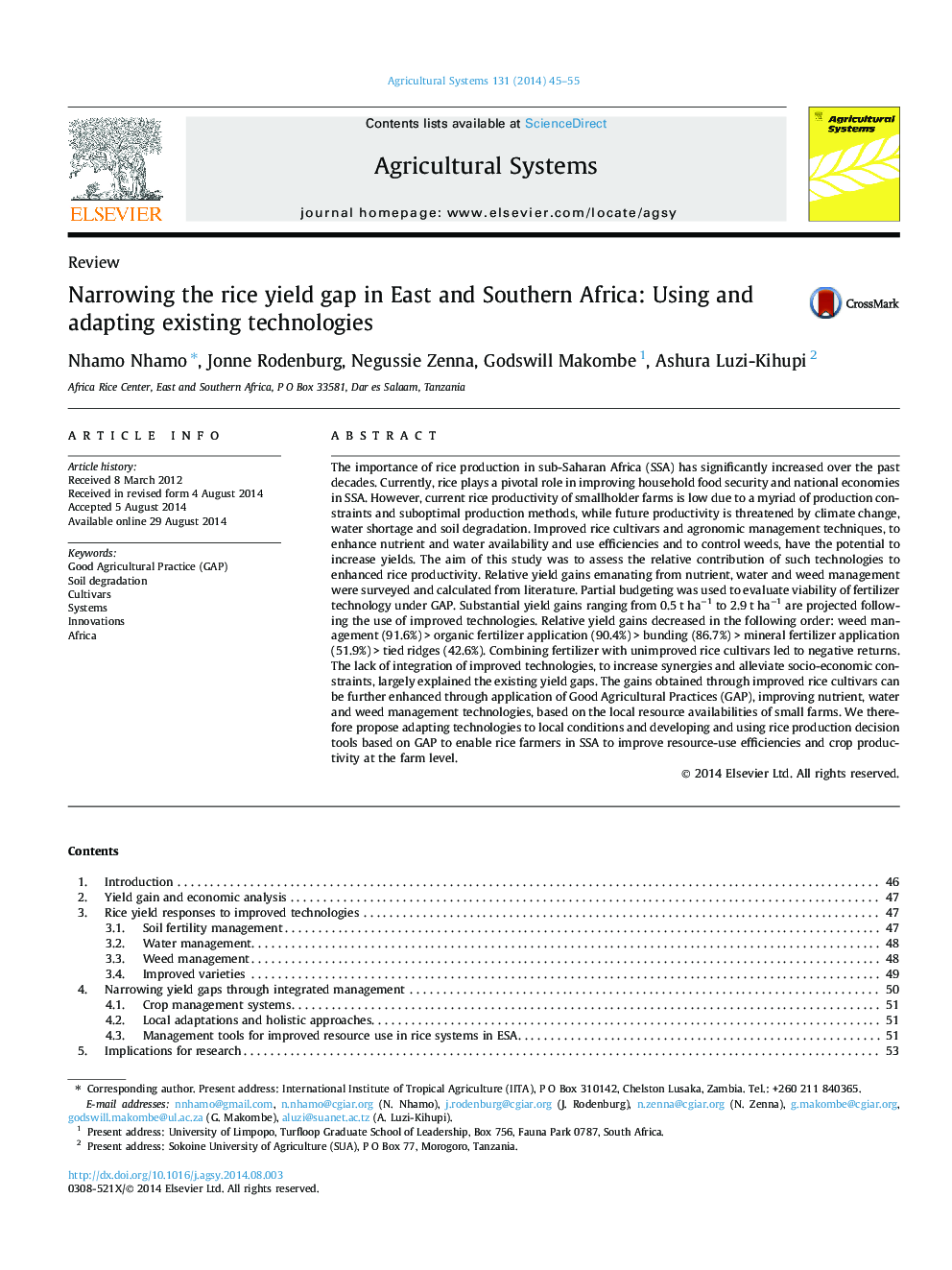| کد مقاله | کد نشریه | سال انتشار | مقاله انگلیسی | نسخه تمام متن |
|---|---|---|---|---|
| 4491210 | 1623239 | 2014 | 11 صفحه PDF | دانلود رایگان |
• Large gaps exist in rice yields on smallholder farms in East and Southern Africa.
• Highest yield gains in rice result from the management of weeds and soil nutrients.
• Fertilizer use on unimproved rice cultivars results in negative economic returns.
• GAP have the potential of generating synergies from component technologies.
• Adapted technologies and GAP based decision tools improve resource-use efficiency.
The importance of rice production in sub-Saharan Africa (SSA) has significantly increased over the past decades. Currently, rice plays a pivotal role in improving household food security and national economies in SSA. However, current rice productivity of smallholder farms is low due to a myriad of production constraints and suboptimal production methods, while future productivity is threatened by climate change, water shortage and soil degradation. Improved rice cultivars and agronomic management techniques, to enhance nutrient and water availability and use efficiencies and to control weeds, have the potential to increase yields. The aim of this study was to assess the relative contribution of such technologies to enhanced rice productivity. Relative yield gains emanating from nutrient, water and weed management were surveyed and calculated from literature. Partial budgeting was used to evaluate viability of fertilizer technology under GAP. Substantial yield gains ranging from 0.5 t ha−1 to 2.9 t ha−1 are projected following the use of improved technologies. Relative yield gains decreased in the following order: weed management (91.6%) > organic fertilizer application (90.4%) > bunding (86.7%) > mineral fertilizer application (51.9%) > tied ridges (42.6%). Combining fertilizer with unimproved rice cultivars led to negative returns. The lack of integration of improved technologies, to increase synergies and alleviate socio-economic constraints, largely explained the existing yield gaps. The gains obtained through improved rice cultivars can be further enhanced through application of Good Agricultural Practices (GAP), improving nutrient, water and weed management technologies, based on the local resource availabilities of small farms. We therefore propose adapting technologies to local conditions and developing and using rice production decision tools based on GAP to enable rice farmers in SSA to improve resource-use efficiencies and crop productivity at the farm level.
Journal: Agricultural Systems - Volume 131, November 2014, Pages 45–55
